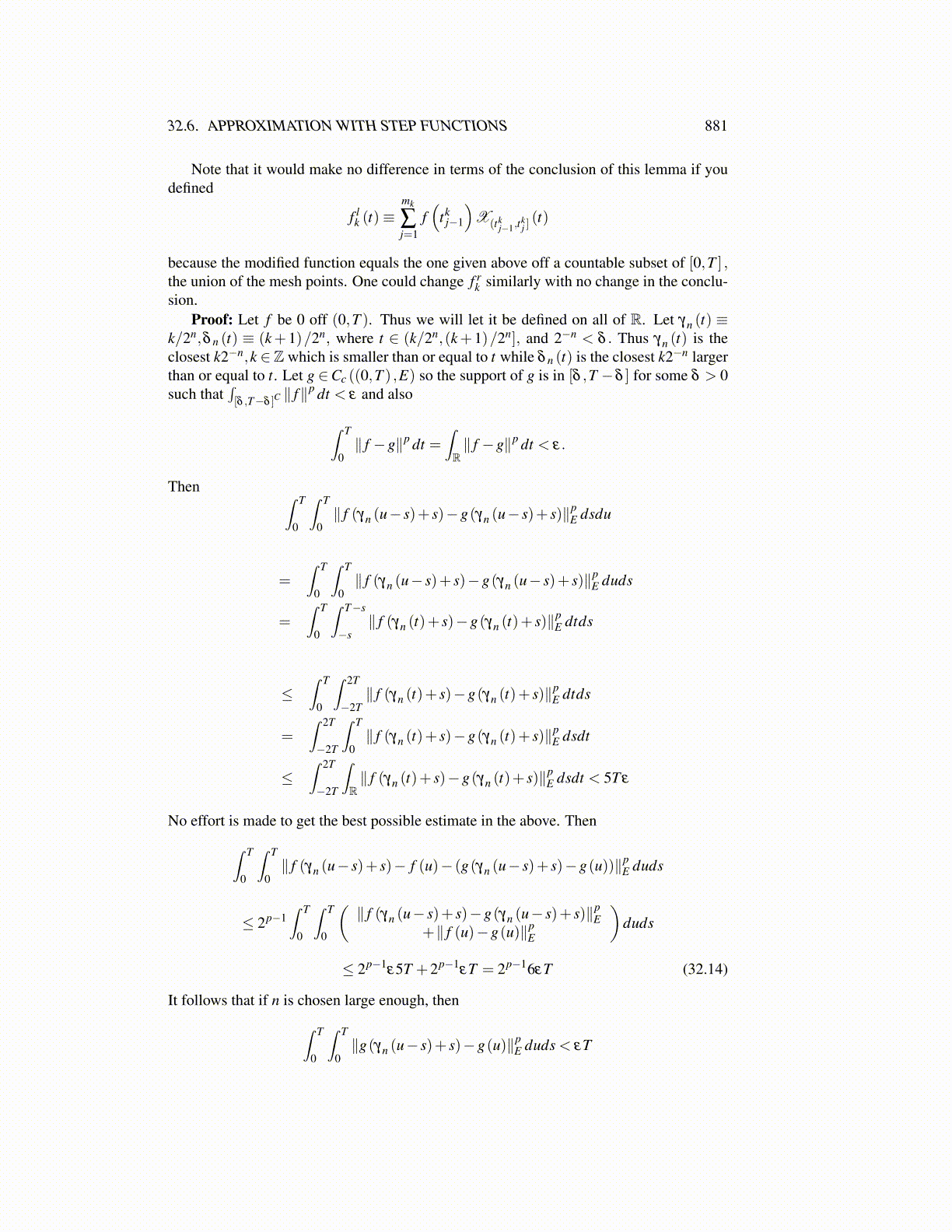
32.6. APPROXIMATION WITH STEP FUNCTIONS 881
Note that it would make no difference in terms of the conclusion of this lemma if youdefined
f lk (t)≡
mk
∑j=1
f(
tkj−1
)X(tk
j−1,tkj ](t)
because the modified function equals the one given above off a countable subset of [0,T ] ,the union of the mesh points. One could change f r
k similarly with no change in the conclu-sion.
Proof: Let f be 0 off (0,T ). Thus we will let it be defined on all of R. Let γn (t) ≡k/2n,δ n (t) ≡ (k+1)/2n, where t ∈ (k/2n,(k+1)/2n], and 2−n < δ . Thus γn (t) is theclosest k2−n,k ∈ Z which is smaller than or equal to t while δ n (t) is the closest k2−n largerthan or equal to t. Let g ∈Cc ((0,T ) ,E) so the support of g is in [δ ,T −δ ] for some δ > 0such that
∫[δ ,T−δ ]C
∥ f∥p dt < ε and also
∫ T
0∥ f −g∥p dt =
∫R∥ f −g∥p dt < ε.
Then ∫ T
0
∫ T
0∥ f (γn (u− s)+ s)−g(γn (u− s)+ s)∥p
E dsdu
=∫ T
0
∫ T
0∥ f (γn (u− s)+ s)−g(γn (u− s)+ s)∥p
E duds
=∫ T
0
∫ T−s
−s∥ f (γn (t)+ s)−g(γn (t)+ s)∥p
E dtds
≤∫ T
0
∫ 2T
−2T∥ f (γn (t)+ s)−g(γn (t)+ s)∥p
E dtds
=∫ 2T
−2T
∫ T
0∥ f (γn (t)+ s)−g(γn (t)+ s)∥p
E dsdt
≤∫ 2T
−2T
∫R∥ f (γn (t)+ s)−g(γn (t)+ s)∥p
E dsdt < 5T ε
No effort is made to get the best possible estimate in the above. Then∫ T
0
∫ T
0∥ f (γn (u− s)+ s)− f (u)− (g(γn (u− s)+ s)−g(u))∥p
E duds
≤ 2p−1∫ T
0
∫ T
0
(∥ f (γn (u− s)+ s)−g(γn (u− s)+ s)∥p
E+∥ f (u)−g(u)∥p
E
)duds
≤ 2p−1ε5T +2p−1
εT = 2p−16εT (32.14)
It follows that if n is chosen large enough, then∫ T
0
∫ T
0∥g(γn (u− s)+ s)−g(u)∥p
E duds < εT